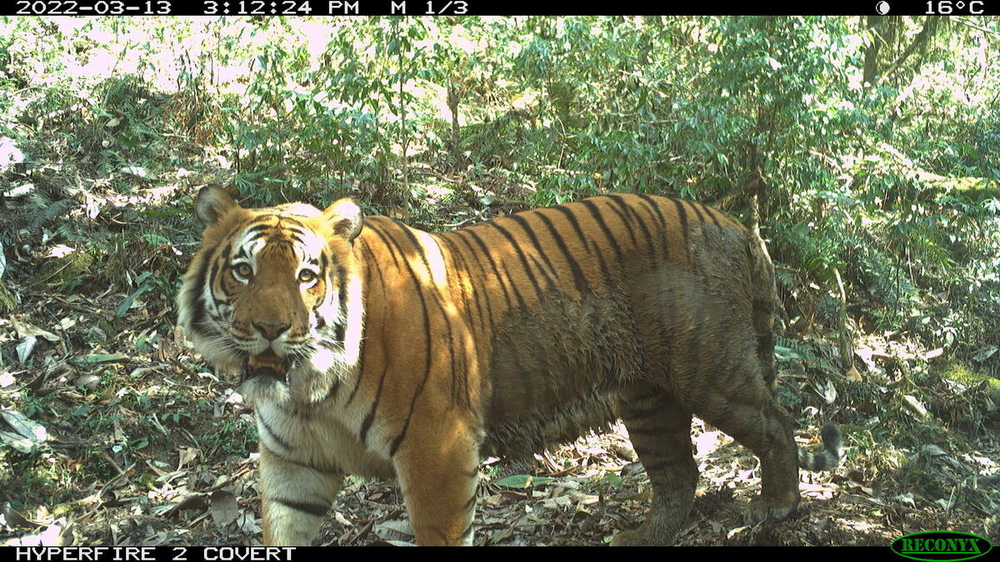A survey of wild tiger numbers in Bhutan has revealed a welcome increase to 131 individuals – up 27% from the 103 recorded in the first systematic national survey back in 2015.
Led by the country’s Department of Forests and Park Services with support from WWF and others, the survey took place in 2021-22 across 32,800 km2 – an incredible 85% of the country.
This population growth has been aided by varied efforts over the last 10 years. These include increased law enforcement, community-based tiger conservation programmes, habitat improvement and addressing conflict situations between people and wildlife.
However, threats such as poaching, habitat loss and human-wildlife conflict have not gone away − and the survey report sets out the action still needed to help tigers thrive.
Chimi Rinzin, Country Director, WWF-Bhutan, welcomed the survey results, saying: “WWF commits to continue working with the government and partners towards holistic conservation efforts benefiting both people and wildlife.”
THE BIGGER PICTURE
Since 13 tiger-range governments across Asia committed to doubling wild tiger numbers in 2010, there have been increases in some sites, including the latest positive news from Bhutan and the near-tripling of Nepal’s population that was reported last year.
But concerns remain about the lack of progress in much of Southeast Asia where there have been declines and national extinctions.
Looking forward, the challenges can’t be under-estimated. Solutions are complex and involve many partners because tigers only thrive in large areas with diverse habitats free from human disturbance and rich in prey.
However, WWF remains committed to working for tigers. What we do is about more than securing the future of a single iconic species – it sets a precedent for how the health of nature, so vital for humanity and wildlife alike, will be considered and prioritized in global development and in a changing climate going forward.


